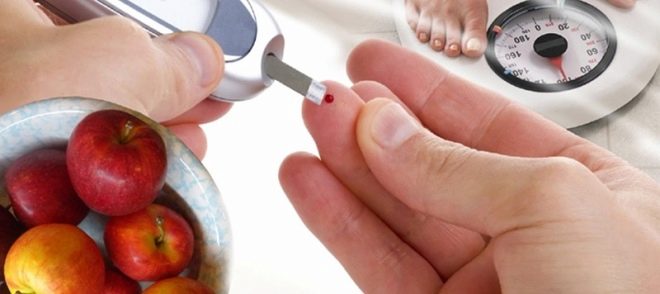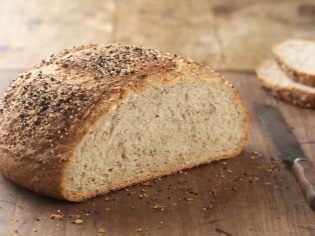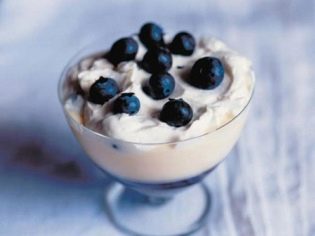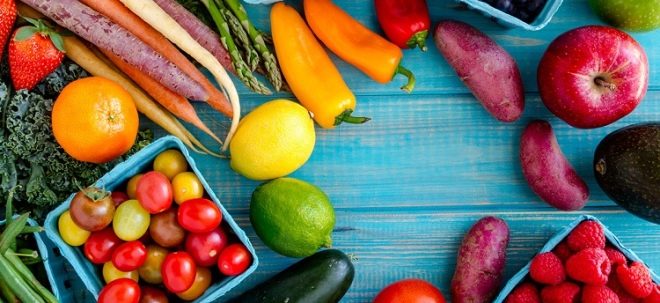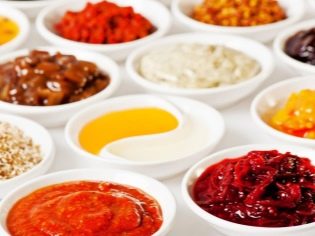Nutrition in diabetes for pregnant women: diet "Table number 9" and an example menu
Diabetes during pregnancy is not uncommon. It may be present in a woman for a long time, or it may appear in an “interesting” position for the first time. In any case, the expectant mother will need a large proportion of self-discipline and will in order to comply with all the medical recommendations that will make it possible to deliver to a deadline and give birth to a healthy child.
In the first place in the clinical recommendations goes proper nutrition. How it should be for the future mother, suffering from diabetes, we will tell in this material.
General principles
From normal nutrition during pregnancy, nutrition for future mothers with diabetes mellitus or gestational diabetes has a large number of restrictions. Calories for a pregnant diabetic should be reduced to 1600-2000 Kcal per day (whereas a pregnant woman without problems with elevated levels of glucose in the blood and urine can consume up to 2800 and even up to 3000 Kcal). For each woman, the allowed caloric in diabetes is calculated individually using the formula: 35 Kcal per kilogram of weight.
Up to 45% of the total daily ration should be complex carbohydrates, up to 20% is allocated to proteins and about 30% to fats. The total amount of carbohydrates should not exceed 200 grams per day. For a woman with diabetes, it is important to eat often and fractionally - at least 6-8 times a day.
It will be preferable if the intervals between meals do not exceed 2.5 hours.
Initially, the physician should assist in the planning of the diet. Only a specialist will be able to assess the ratio of weight and height of the future mother, will take into account the duration of her pregnancy (in first trimester nutrition should be more caloric than in the third), compare the level of excess glucose with the norms and calculate the ratio of substances necessary for it in the daily diet.
The basic principles of nutrition for a pregnant woman with diabetes include the following rules:
- you can not eat a large amount of food at a time, because it can lead to a sharp jump in blood sugar levels, because it is better to divide the product into several meals and eat a little bit;
- in the preparation of the diet should be extremely careful with products containing starch, and milk (and they both are sources of glucose);
- when picking fruit, avoid fruits with a high content of natural saccharides; it is better to choose acidic fruits;
- the main meal is breakfast, the level of glucose at the very beginning of the day and throughout the day depends on how it is planned, and since cereals and cereals for breakfast will lead to a jump in sugar, it is better to stay on protein foods and small whole grain breads;
- you should completely abandon fruit juices, severely limit sweets, desserts, sweets, cookies;
- the diet of a pregnant woman should include only foods with a low and medium glycemic index.
For convenience, doctors have drawn up therapeutic diets that have a sequence number after the word "table". For diabetics, the “Table No. 9” type of diet is used; for pregnant diabetics, there is a type of this diet - “Table No. 9a”.
Diet "Table number 9"
This diet is one of the fifteen therapeutic food complexes developed by specialists from the world of medicine.Its uniqueness lies in the fact that compliance with the recommendations not only contributes to the treatment, but also is an effective prevention of exacerbation of manifestations of sugar or gestational diabetes (GDM).
From the diet of the future mother should completely eliminate all carbohydrates, which are quickly absorbed by the body. Similarly, come with foods that contain high density cholesterol. This does not mean that the expectant mother should say goodbye to sweet, because she can eat foods with sugar substitutes - sorbitol, sucrose, xylitol.
Salts should be eaten no more than 12 grams per day, and drink at least 2 liters of regular clean drinking water. Products should be baked, boiled, stewed, steamed. Fried, smoked and fat is contraindicated. But on vegetables rich in fiber, should be pushed without much restraint.
Permitted products include:
- fruits (except bananas, pears, sweet peaches and grapes);
- cereals (except for manna, and rice is allowed to eat no more than 1 time per week);
- meat and poultry (except lamb, pork);
- beef liver, tongue (pork offal is contraindicated);
- bread (whole grain or bran with a total of not more than 300 grams per day);
- vegetables (except beets, carrots and potatoes);
- dairy and dairy products with low fat content;
- fish (only low-fat sea and river varieties);
- eggs (no more than 1-2 per week);
- oil (vegetable or cream can be added in a small amount not during cooking, but in ready-made dishes);
- Drinks (allowed rose hothouse or cranberry juice without sugar, fruit compote from berries and fruit without sugar, vegetable juices, non-carbonated mineral water).
The prohibited products include:
- fatty fish (herring, mackerel);
- sausage sausages;
- "Strong" rich meat broths;
- pastry;
- canned and semi-finished products;
- pickled foods;
- fish roe;
- fast food;
- honey, sugar, chocolate, factory sweets and pastries, sweets and cakes, pastries.
In pregnancy, the diet “Table No. 9a” contains all the same fundamental principles and prohibitions, but in addition the woman is given vitamin preparations in the menu that the doctor deems necessary to prescribe.
On the basis of the exact composition of the vitamin complex, the diet itself can be corrected - somewhere the content of vitamin C is reduced, somewhere magnesium is added.
A woman on such a therapeutic diet must be weighed weekly, regularly donate blood and urine to determine the level of glucose, use a home glucometer. In no case should not be prolonged fasting, because it can lead to an excessive fall in sugar levels and impaired insulin production. An hour after a meal, it is desirable to measure blood sugar levels.
Sample menu
In drawing up the menu for every day, a woman must be guided by the principle of the balance of products. It is desirable that the main meals (and there should be at least three of them a day) contain all the necessary components of a healthy diet - proteins, fats, complex carbohydrates. And three or four subsidiary meals, which are popularly called “snacks”, should be as light as possible.
Based on this principle of rationality and balance, we will try together to create the optimal menu for several days:
- first breakfast (7.00 am) - oatmeal on water with a piece of butter, boiled soft-boiled egg, tea with skim milk and sorbitol, green apple;
- the second breakfast (9.30) - homemade cranberry juice with sorbitol, apricot;
- lunch (12.00) - a salad of fresh cucumbers and tomatoes, cabbage soup made from fresh cabbage on chicken breast broth with the addition of a small amount of low-fat sour cream, stewed zucchini, tomato juice;
- afternoon tea (14.30) - dogrose decoction, whole grain loaf, apple;
- dinner (17.00) - stewed or baked fish, cauliflower, tea with sugar substitute, avocado;
- second dinner (19.30) - biokefir (about 200 grams);
- the third dinner (one hour before bedtime) is a green apple or homemade berry fruit juice without sugar.
Here is another option useful and correct menu for the future mother with diabetes:
- breakfast (7.00) - protein omelet, bran bread, a piece of unsalted and low-fat cheese, green tea with sugar substitute, an apple;
- the second breakfast (9.30) - low-fat cottage cheese with blueberries;
- dinner (12.00) - salad from fresh cabbage with vegetable oil, soup-ear without pasta and with a minimum amount of potatoes, steam cutlets from chicken mince, mashed stewed pumpkin, fruit drink;
- afternoon tea (14.30) - homemade apple puree (or mashed potatoes for feeding young children without sugar);
- dinner (17.00) - fish steamed patties, stewed cabbage stew, zucchini and broccoli, fresh vegetable salad, tea;
- second dinner (19.30) - bioyoghurt;
- the third dinner (one hour before bedtime) - rosehip decoction with sugar substitute, an apple.
Useful tips
The following should be remembered:
- When combining permitted foods, it should be remembered that most of the diet should consist of vegetables and fruits. Meat and poultry during pregnancy are needed daily, especially when pregnancy is aggravated by diabetes, so there is no place for separate monodiets and vegetarianism.
- Try not to skip meals. Get some food containers and arrange the portions in them for all receptions for the next 24 hours. It will be easier this way, especially if the woman is working or studying. Even at work or in breaks between lectures, you should find time to eat the proper portion.
- Use easy cooking recipes for cooking.. This will save time and provide the future mother and her baby with all necessary. These simple dishes include buckwheat porridge on the water, boiled pollock, stewed beef pieces. Avoid exotic foods (fruits and fish), as well as spices. Of all the spices for a pregnant woman with diabetes mellitus or gestational diabetes, only a small amount of dill (in soup or salad) or parsley is permissible.
- A woman should completely abandon mayonnaise, mustard, vinegar, ready-made sauces, ketchup. Natural coffee and cocoa are also banned. If you want something to spice up the dish, use low-fat sour cream and own ingenuity. It can be mixed with finely chopped dill or grated sour apple.
Very soon, confidence will come that homemade sauces are not only healthy, but also very tasty.
In the next video, see the sample menu for the week and recipes for diets diet "table number 9."





